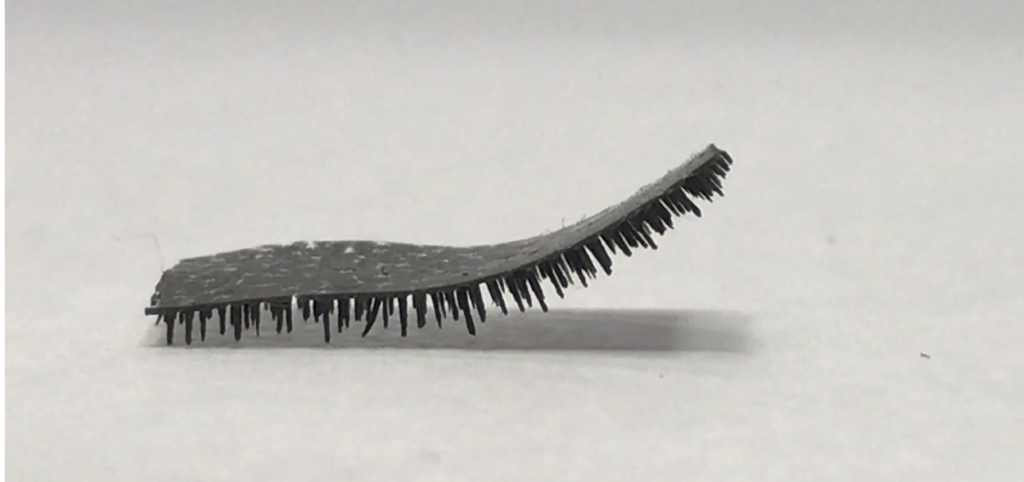
A moving robot caterpillar from China.
Soft Microrobots Represent a New Step in Delivering Cancer Drugs
If you are old enough you might recall the movie Fantastic Voyage. The 1966 film was the trippy story about scientists shrinking a submarine, and its crew down to atom size. Then they injected the sub into a sick patient to have it travel through the body to a tumor that needs to be destroyed.
As is often the case, a story about life imitating art from newscientist.com is reminiscent of this fictional portrayal.
Metin Sitti at the Max Planck Institute for Intelligent Systems in Stuttgart, Germany, and his colleagues have developed tiny robots called “microrollers” that can carry cancer drugs and selectively target human breast cancer cells.
The microrollers are spherical and made from glass microparticles. One half of the robot was coated with a thin magnetic nanofilm made from nickel and gold. The other half was coated with the cancer drug doxorubicin as well as molecules that recognize cancer cells.
The team tested the robots in a simulation using mouse blood and synthetic channels lined with human endothelial cells – the kind of cells that line the inner walls of our blood vessels. The robots were exposed to a mixture of cancerous and healthy tissue. The microrollers selectively attached to the cancer cells and were activated using UV light to release the doxorubicin.
By applying magnetic fields, the team was able to steer the movement of the microrollers, both with and against the flow of blood. The microrollers can reach a speed of up to 600 micrometres per second.
It’s been reported that Setti and his team have also harnessed regular everyday algae to do some interbody drug delivery, also using magnetic fields to steer the algae.
China’s Tiny Bots
A tiny, caterpillar-like robot is being developed by researchers in China — to help deliver therapeutic drugs inside the human body. With soft, flexible legs similar to a real caterpillar, it can carry heavy-weight loads 100 times heavier than itself — the equivalent strength of a human able to lift a 26 seat mini-bus. Plus it can adapt to difficult + uneven terrain.
According to an article written in 2019 for kurzweilai.net, the prototype could pave the way for advances in bio-medicine: such as drug delivery. Before conducting tests in animals — and eventually, in humans — the research team is experimenting with new shapes, finding a bio-degradable material for its body, and adding features.
According to a story in machinedesign.com, the soft caterpillar robot is made of silicon material called poly-dimethyl-siloxane (PDMS), measures .15 mm thick and is capable of carrying 100 times its own weight and moving in difficult, wet areas with ease.
“Both the materials and the multi-leg design greatly improve the robot’s hydrophobic property,” says Wang Zuankai, a professor at CityU’s Department of Mechanical Engineering (MNE) who conceived this research idea and initiated the collaboration among the researchers. “Besides, the rubber piece is soft and can be cut easily to form robots of various shapes and sizes for different applications.”
According to a story on kurzweilai.net, the robot represents a potential breakthrough for drug delivery because it, “can move efficiently across surfaces (within the human body) lined with, or totally immersed in, body fluids — such as blood or mucus. For example, it could potentially transport a standard pill-sized object through a human body organ like the stomach.”
The researchers plan to make the robot biodegradable within three years.
read more at newscientist.com







Leave A Comment